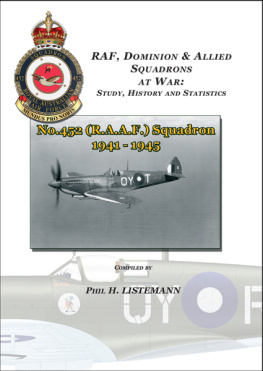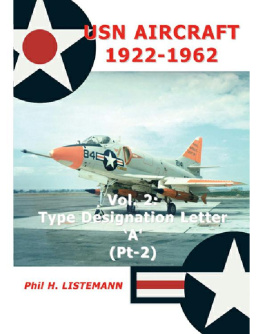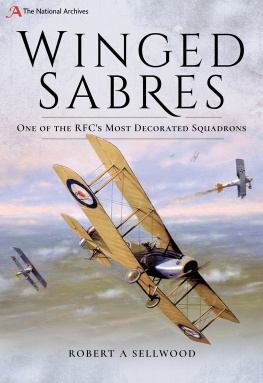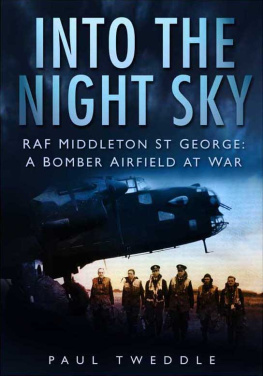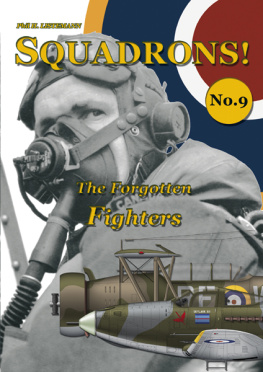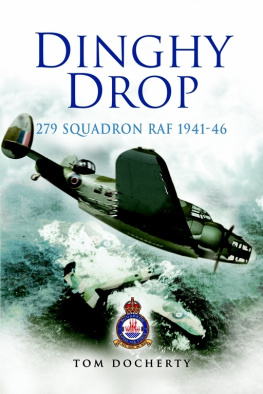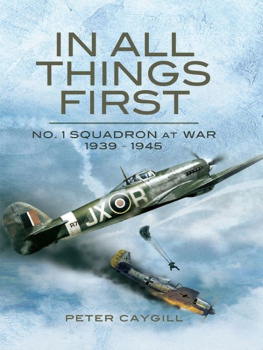Phil H. Listemann - No. 452 (RAAF) Squadron 1941-1945
Here you can read online Phil H. Listemann - No. 452 (RAAF) Squadron 1941-1945 full text of the book (entire story) in english for free. Download pdf and epub, get meaning, cover and reviews about this ebook. year: 2013, publisher: Philedition, genre: Non-fiction. Description of the work, (preface) as well as reviews are available. Best literature library LitArk.com created for fans of good reading and offers a wide selection of genres:
Romance novel
Science fiction
Adventure
Detective
Science
History
Home and family
Prose
Art
Politics
Computer
Non-fiction
Religion
Business
Children
Humor
Choose a favorite category and find really read worthwhile books. Enjoy immersion in the world of imagination, feel the emotions of the characters or learn something new for yourself, make an fascinating discovery.
- Book:No. 452 (RAAF) Squadron 1941-1945
- Author:
- Publisher:Philedition
- Genre:
- Year:2013
- Rating:5 / 5
- Favourites:Add to favourites
- Your mark:
- 100
- 1
- 2
- 3
- 4
- 5
No. 452 (RAAF) Squadron 1941-1945: summary, description and annotation
We offer to read an annotation, description, summary or preface (depends on what the author of the book "No. 452 (RAAF) Squadron 1941-1945" wrote himself). If you haven't found the necessary information about the book — write in the comments, we will try to find it.
No. 452 (RAAF) Squadron 1941-1945 — read online for free the complete book (whole text) full work
Below is the text of the book, divided by pages. System saving the place of the last page read, allows you to conveniently read the book "No. 452 (RAAF) Squadron 1941-1945" online for free, without having to search again every time where you left off. Put a bookmark, and you can go to the page where you finished reading at any time.
Font size:
Interval:
Bookmark:
No.452 (RAAF) Squadron 1941-1945
eISBN: 978-2918590-22-4
Contributors & Acknowledgments:
Aviation Heritage Museum of WA, Drew Harrison, Malcolm Laird
Stephen McGregor (The Spitfire Association - Australia), Steve Mackenzie, Andrew Thomas
Printed in France
Copyright
2011 Philedition - Phil H. Listemann
All right reserved. No part of this book may be reproduced, stored in a retrieval system or transmitted in any form by any means,
electronic, mechanical, photocopying, recording or otherwise, without prior permission of the author.
Cover: Spitfire Mk.VIII A58-516 usually flown by F/O Kenneth May flying around Morotai (NEI) in December 1944.
PREFACE
The purpose of this study is to provide aviation historians and enthusiasts with a range of information relative to each of the Commonwealth squadrons that saw combat during World War II. Each record will comprise a short history, complete with illustrations and artwork, and accompanied by the following appendices:
Individual files will be constantly updated, when any fresh information comes to light. Additional information will be available for download, at no charge, on each squadrons site at www.raf-in-combat.com
GLOSSARY OF TERMS
PERSONNEL :
(AUS)/RAF: Australian serving in the RAF
(CAN)/RAF: Canadian serving in the RAF
(NZ)/RAF or RAAF: New Zealander serving in the RAF or RAAF
(SA)/RAF: South African serving in the RAF
(US)/RAF or RCAF: American serving in the RAF or RCAF
RANKS
G/C: Group Captain
W/C: Wing Commander
S/L: Squadron Leader
F/L: Flight Lieutenant
F/O: Flying Officer
P/O: Pilot Officer
W/O: Warrant Officer
F/Sgt: Flight Sergeant
Sgt: Sergeant
Cpl: Corporal
LAC: Leading Aircraftman
OTHER
AAF: Auxiliary Air Force
CO: Commanding Officer
DFC: Distinguished Flying Cross
DFM: Distinguished Flying Medal
DSO: Distinguished Service Order
Eva.: Evaded
Inj.: Injured
NEI: Netherlands East Indies
ORB: Operational Record Book
OTU: Operational Training Unit
PoW: Prisoner of War
RAF: Royal Air Force
RAAF: Royal Australian Air Force
RCAF: Royal Canadian Air Force
RNZAF: Royal New Zealand Air Force
SAAF: South African Air Force
Sqn: Squadron
TOC: Taken on charge
: Killed
MAIN EQUIPMENT
SPITFIRE I | Apr.41 - May.41 |
SPITFIRE II | May.41 - Aug.41 |
SPITFIRE V | Aug.41 - May.42 |
Sept.42 - Jun.44 | |
SPITFIRE VIII | Jan.44 - Nov.45 |
SQUADRON CODE LETTERS:
UD
(EUROPE)
QY
(AUSTRALIA FROM JUNE 1943 AND PACIFIC)
SQUADRON HISTORY
No. 452 (RAAF) Squadron was the first Australian squadron formed in Britain during the Second World War. It came into being at Kirton-in-Lindsey on 8 April 1941 under the command of Squadron Leader Roy Dutton, a very experienced British pilot. After working up on war-weary Spitfire Mk.Is, it became operational in May with Spitfire Mk.IIs and performed its first sorties on 22nd when Sergeants Milnes and Roberts took off to patrol off the coast. Until the move to Kenley in July, the squadron flew mainly convoy patrols and a few unconclusive interceptions. However things changed with first offensive sweep over France on 11 July. On this occasion the Irish flight commander Paddy Finucane shot down the squadrons first German aircraft. Unfortunately one aircraft and pilot were also lost to the Germans during the same engagement.
From that day forth No.452 Squadron rapidly developed a formidable reputation on operations against the Luftwaffe; especially after the squadron relinquished its venerable Spitfire Mk.IIs for Spitfire Mk.Vs in August 1941. It went on to claim 69 confirmed or probable victories through to mid-March 1942, but sustained in return rather heavy losses; 23 aircraft in combats that claimed the lives of 12 pilots, while 6 more became prisoners. Some of these were due to multiple losses on single missions, including four during a 18 September 1941 engagement.
The tally of some pilots became very impressive. While Paddy Finucane was the most successuful pilot of that time, Australians like Throttle Thorold-Smith, Bluey Truscott or Keith Chisholm also scored consistently. Logically awards followed as squadron members were awarded a DSO, eight DFC or Bars to DFC, and one DFM in the same period.
However, the situation changed a little later in the spring of 1942 when it was determined that Australia needed fighter squadrons to defend its own cities located in the north. Among the three Fighter Command units chosen to be sent to Australia, No.452 and its sister unit, No.457 (RAAF) Squadron, were natural selections. However to allow the latter to gain combat experience before sailing to Australia, No.452 was witdrawn from operations in March 1942. It eventually sailed for home on 21 June 1942, arriving in Melbourne on 13 August and re-assembled at Richmond, New South Wales on 6 September without aircraft (which were in the Middle East on route.) After refresher training on various aircraft, No.452 Squadron became operational on Spitfires again in January 1943 at Batchelor, Northern Territory. Here, along with No.54 (RAF) and No.457 (RAAF) Squadrons, it became part of No.1 Fighter Wing, RAAF with the main task of defending Darwin.
About one year after its last victory in Europe No.452 Sqn claimed two Japanese aircraft during a raid on Darwin but lost its CO, S/L Throttle Thorold-Smith, during the engagement. Throughout the next few months the squadron was involved in many defensive actions, and although they claimed 18 more victories against the Japanese, they also suffered heavy losses.
In March 1944, it moved south to defend Perth but little action was recorded. In May it became part of No.80 Fighter Wing, RAAF. No.452 Sqn returned north in July 1944, re-equipped with Spitfire Mk.VIIIs, and became employed in the ground attack role for the rest of the war. In December 1944 it joined the 1st Tactical Air Force and relocated to Morotai in the Dutch East Indies to support Australian operations in Borneo. The squadrons Spitfires moved to Balikpapan on 15 July 1945, following the landings there earlier in the month, and flew in support of the land campaign. Its last victory of the war was claimed nine days later. With the dropping of the atomic bombs in August, the squadrons days were numbered. It flew its last operational sortie of the on 10 August, and was subsequently disbanded on 17 November 1945 at Tarakan.
ARTICLE XV
Shortly after Britains declaration of war, supported on the same date by Australia and New Zealand, and Canada a week later, the British Government asked Commonwealth countries to supply partially trained aircrew for the expansion of the RAF. In those years prior to the war an allocation of men from the Dominions had been offered Short Service, or Permanent, Commission in the RAF, but the speed with which the Nazis had overrun Poland, made it clear that large numbers of airmen would be needed urgently. In November 1939, the Ottawa (Canada) Conference formulated the setting-up of the Empire Air Training Scheme (EATS) to train aircrew to a uniform standard in each of the Dominions previously mentioned, and subsequently South Africa, which was already operating a scheme, and Rhodesia.
Desirous of exercising some control over its own nationals, which was not the case for those who had joined up prior to the war, Canada obtained, via Article XV, an agreement that their aircrew would be gathered together in national squadrons, to serve alongside the permanent units of the RAF. For operational and administrative reasons Australia and New Zealand were reluctant to establish and maintain RAAF or RNZAF squadrons in Britain so eventually it was decided that units formed in the RAF would be identified with them.
Next pageFont size:
Interval:
Bookmark:
Similar books «No. 452 (RAAF) Squadron 1941-1945»
Look at similar books to No. 452 (RAAF) Squadron 1941-1945. We have selected literature similar in name and meaning in the hope of providing readers with more options to find new, interesting, not yet read works.
Discussion, reviews of the book No. 452 (RAAF) Squadron 1941-1945 and just readers' own opinions. Leave your comments, write what you think about the work, its meaning or the main characters. Specify what exactly you liked and what you didn't like, and why you think so.

